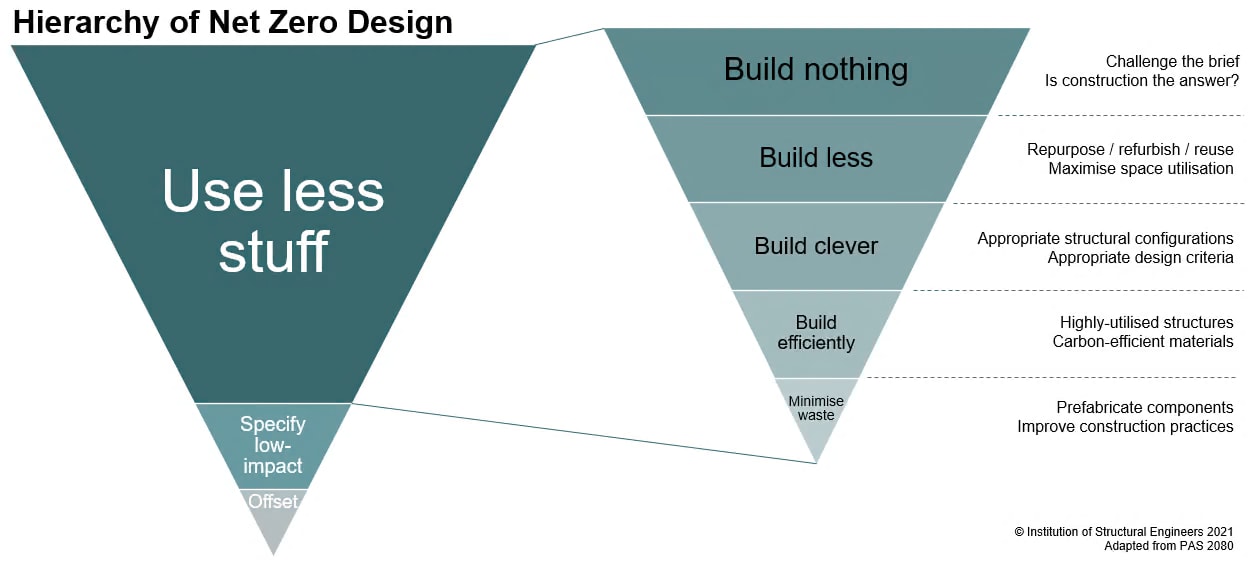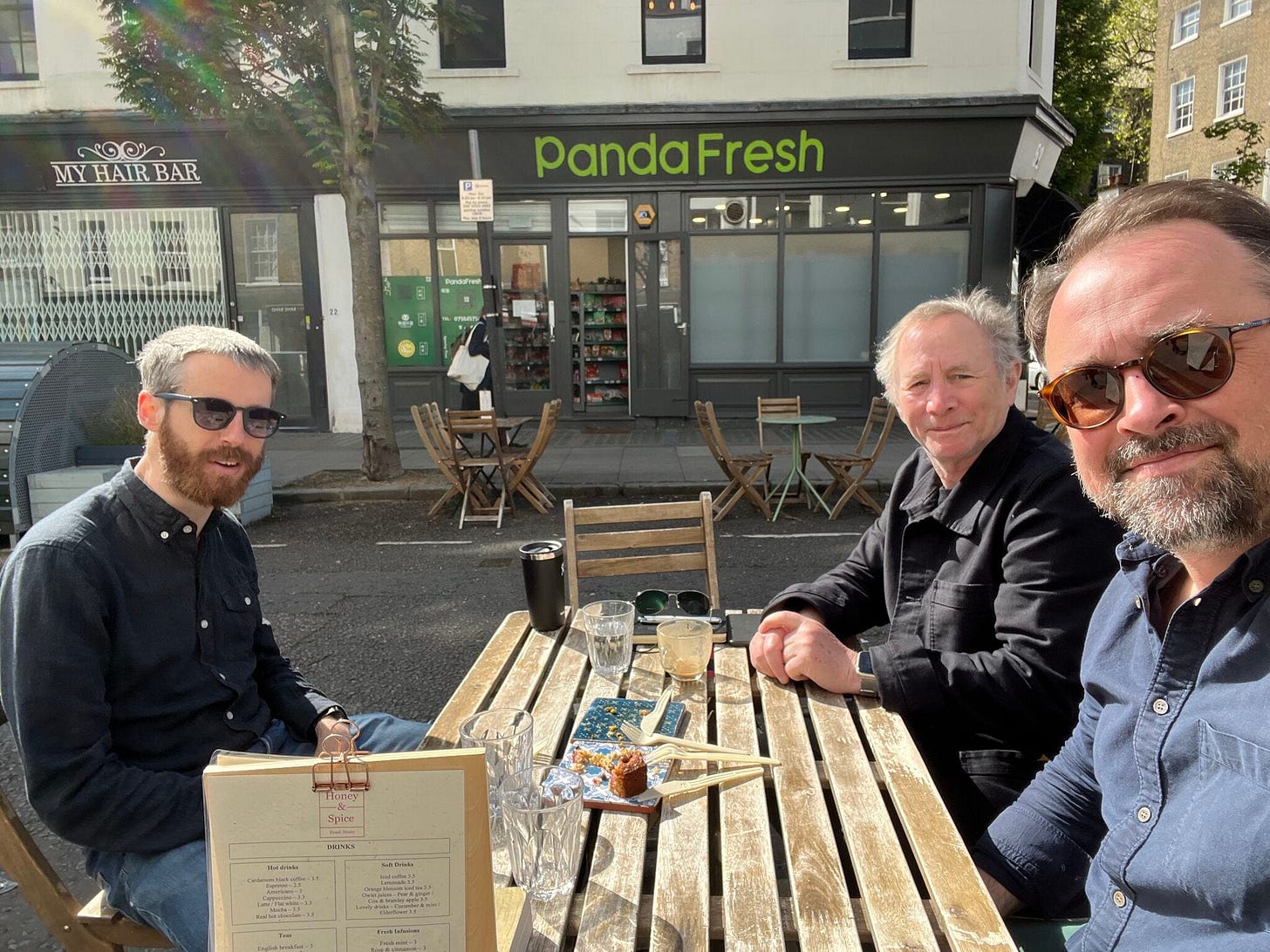A Treasure Map for Sustainable Design
The Institution of Structural Engineers has produced a sustainability resource map that may put me out of business as a teacher; it's all right here.
The Institution of Structural Engineers’ What we do page says “We uphold standards, share knowledge, promote structural engineering and provide a voice for the profession.” what they also do is provide some of the most useful and cutting-edge information on sustainable design that you can find anywhere.
I first learned about the organization via an article by Head of Climate Action Will Arnold, The Hierarchy of Net Zero Design where he distilled it all down to three words, “use less stuff” and concluded:
“It’s a fantastic time to be a building designer – we are some of the few people on earth with the opportunity to make significant reductions in carbon emissions. However, we must put our effort in where it will have the most impact if we want it to really count. Understanding whether we are using less stuff, or decarbonising materials, is an important first step.”
These are not the kind of words I am used to hearing from structural engineers. I loved the positivity; there are not many who are saying it is a fantastic time to be a designer. I wrote earlier about how “use less stuff” has become my mantra.
“Arnold’s hierarchy of Net Zero Design doesn’t just apply to buildings. It applies to everything, from my phone to my jacket to my coffee cup. Do I need it? Can I fix or refurbish the one I have? If I do need one, what are the lowest carbon alternatives?”
I was so impressed that I sought him out in London two years ago; from the left we have Will Arnold, me, and Kelly Alvarez Doran taking the photo.
I would often go to the IstructE site when researching for posts, lectures or books; Will Hawkins’ 2021 essay on timber and carbon sequestration was an eye-opener with his discussion of carbon sequestration:
“Accounting for sequestered carbon is often a source of debate, confusion and inconsistency. When sequestration is reported as a negative emission, it can create the counterintuitive impression that using timber excessively can have environmental benefits.”
It was a shocker with its conclusion “It is better to build nothing at all than a timber building. Similarly, wasteful use of timber can be more damaging than an efficient design in concrete and steel.” I am not entirely convinced, but I quote the article often when teaching or lecturing, and included it in my book, The story of upfront carbon, when I ask, “how good is wood?”
However I might not have to do much more teaching or lecturing, and can just point people to iStructE’s Sustainability Resource Map, a giant PDF where every line is a link to a resource.
“The Sustainability Resource Map is an interactive PDF of recommended resources as of January 2025… In 2019, the Institution of Structural Engineers made the commitment to treat sustainability and the climate emergency with equal importance to life safety. We support the industry’s vital efforts through our role as an international centre of knowledge, sharing information and opinion with our membership and beyond.”
The detail is incredible; in this snapshot you can see how you get essential resources, short reads, long reads, external content, and often, videos.
I asked Will Arnold what inspired it. He explains:
“The map was borne out of a conversation around how we have produced so much sustainability guidance for structural engineers in the last five years that we needed a more condensed way to give people a quick overview. We’re engineers, so it started as a spreadsheet, but quickly became the spider diagram / mind-map that you see on the website today. While it’s mostly IStructE content, it also waypoints to some of our favourite content from elsewhere. A decent proportion of the links (maybe ~30%?) are free to anyone who wants them, not only members. And almost all of the links (>90%) are free to members, including those registered with our cheaper Affiliate Scheme."
A lot of links pointed to a document that cost ten pounds.* However there is more than enough that’s free or an external link to make it worthwhile.
Having worked online for twenty years, I know how common and annoying dead links are. I asked how it was maintained and was pointed to Ben Tapley of Whitby Wood Engineers, who explained:
“The behind-the-scenes version of the resource map is still excel / google sheets document, where we have a schedule of each line entry, assigned to categories, with notes and their hyperlink etc. As well as a list of unused / replaced entries so we don’t spend time re-reading resources we have already reviewed.
Every 6 months or so we collate any recent publications and add them to the schedule, for the Graphic Designer to implement the necessary updates. Yes, links do sometimes break, but fortunately as many of our resources are inhouse, these links are less likely to go missing. I ask some of the junior staff at Whitby Wood to take a section each and just check the links still work, a nice way for them to get involved in the Institution.”
This is so important, speaking as a writer who has lost about three quarters of my work because it was written for commercial sites that were not maintained. We are also seeing much of the work that was done in the USA by government agencies like the Environmental Protection Agency being erased, with any document with “climate change” in the name being sent to the memory hole. We are going to need organizations like the Institution of Structural Engineers and other non-government, non-commercial sources of information in these crazy times.
Download the Sustainability Resource Map here.
Other resources that might be around for a while
There are quite a few valuable resources that are being maintained as public services by architects and engineers around the world. One of my favourites is from LMN Architects who explain:
“Our Path To Zero Carbon Series explores research and solutions for one of the most significant challenges of the 21st century. Addressing the climate crisis requires the buildings industry to reach carbon neutral design and construction across all projects. Our industry is responsible for roughly half of global warming, so our actions to reduce these emissions have a massive impact. With help from many collaborators, LMN is launching this series to research, summarize, and prioritize the most important actions we can take across all emissions sources on projects within the built environment.”
Another great resource is the Carbon Leadership Forum offering a “variety of resources aimed at helping designers, policy-makers, consultants, businesses, and building owners reduce embodied carbon.”
There are no doubt many more great resources, which I hope readers will add in comments.
*Correction: I have removed incorrect information about affiliate membership.











As a framework junkie, this made me so happy. 🥰
“We started with a spreadsheet.” Be still my heart. (But Lloyd, your students need you now more than ever!)